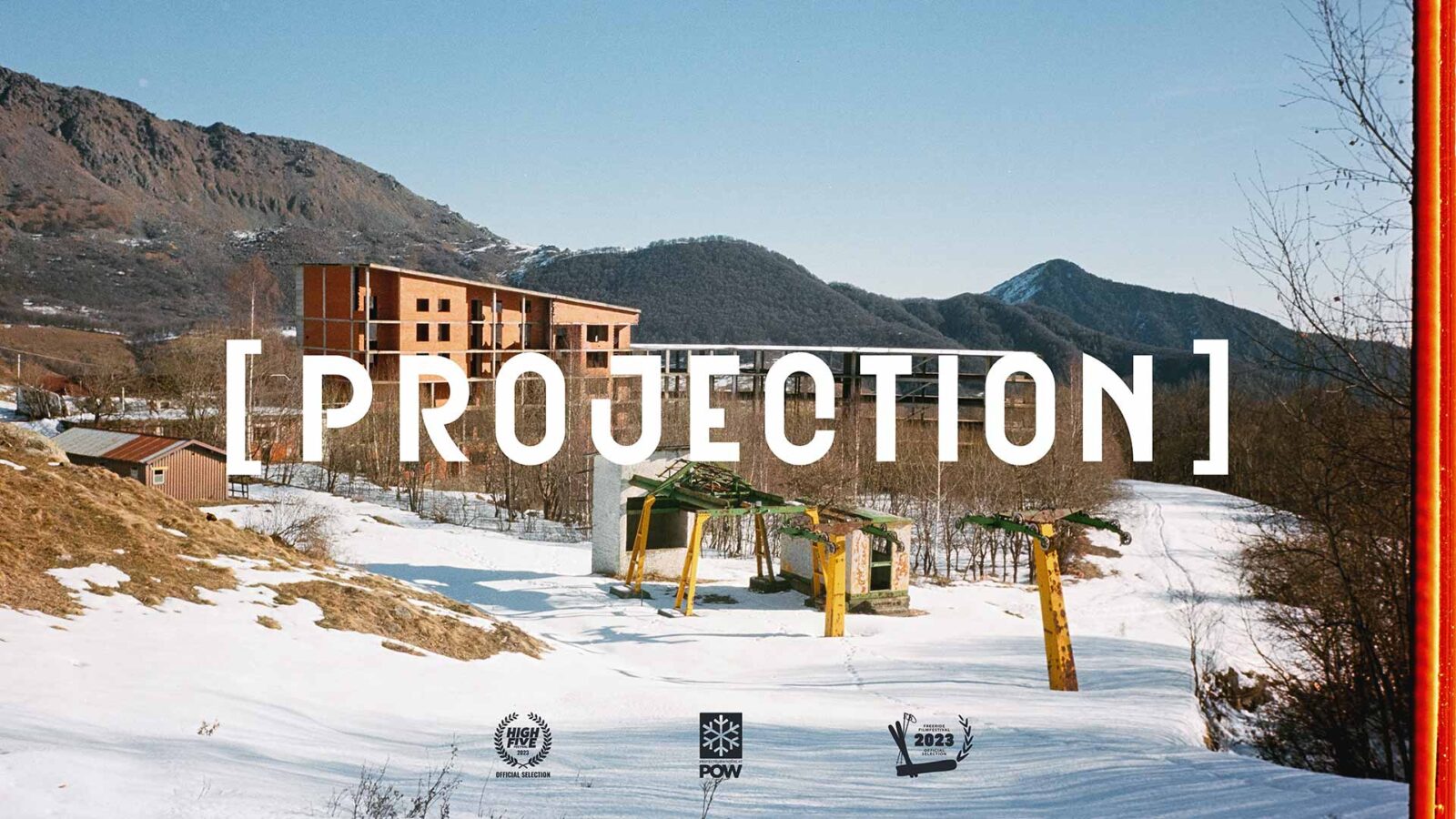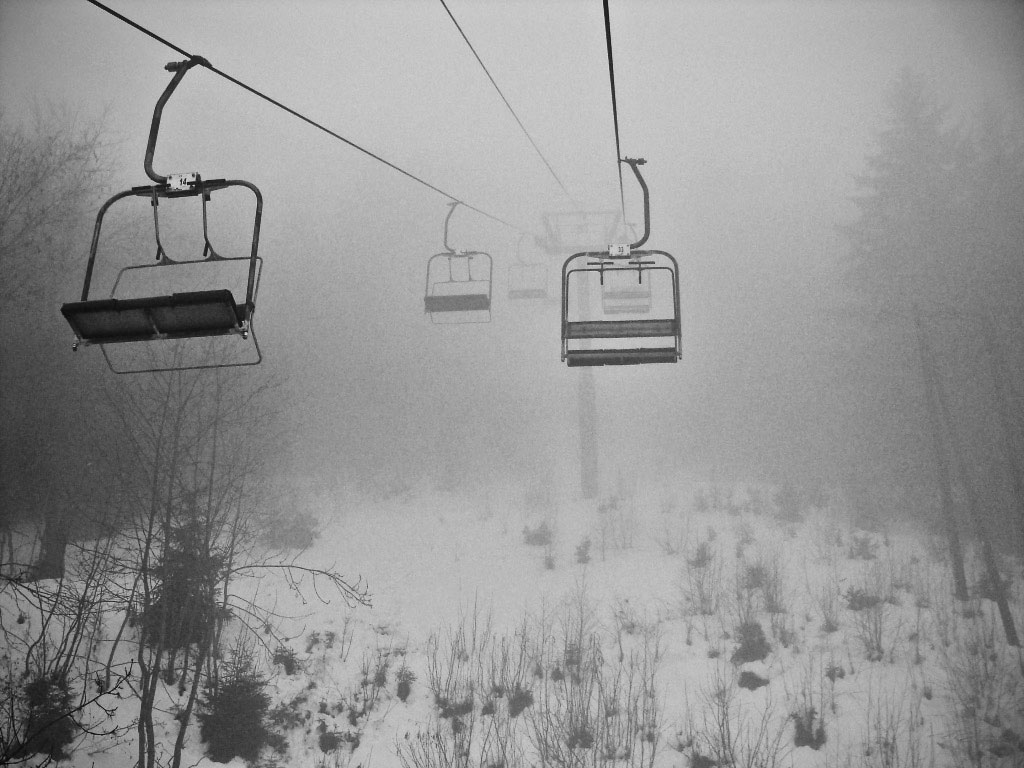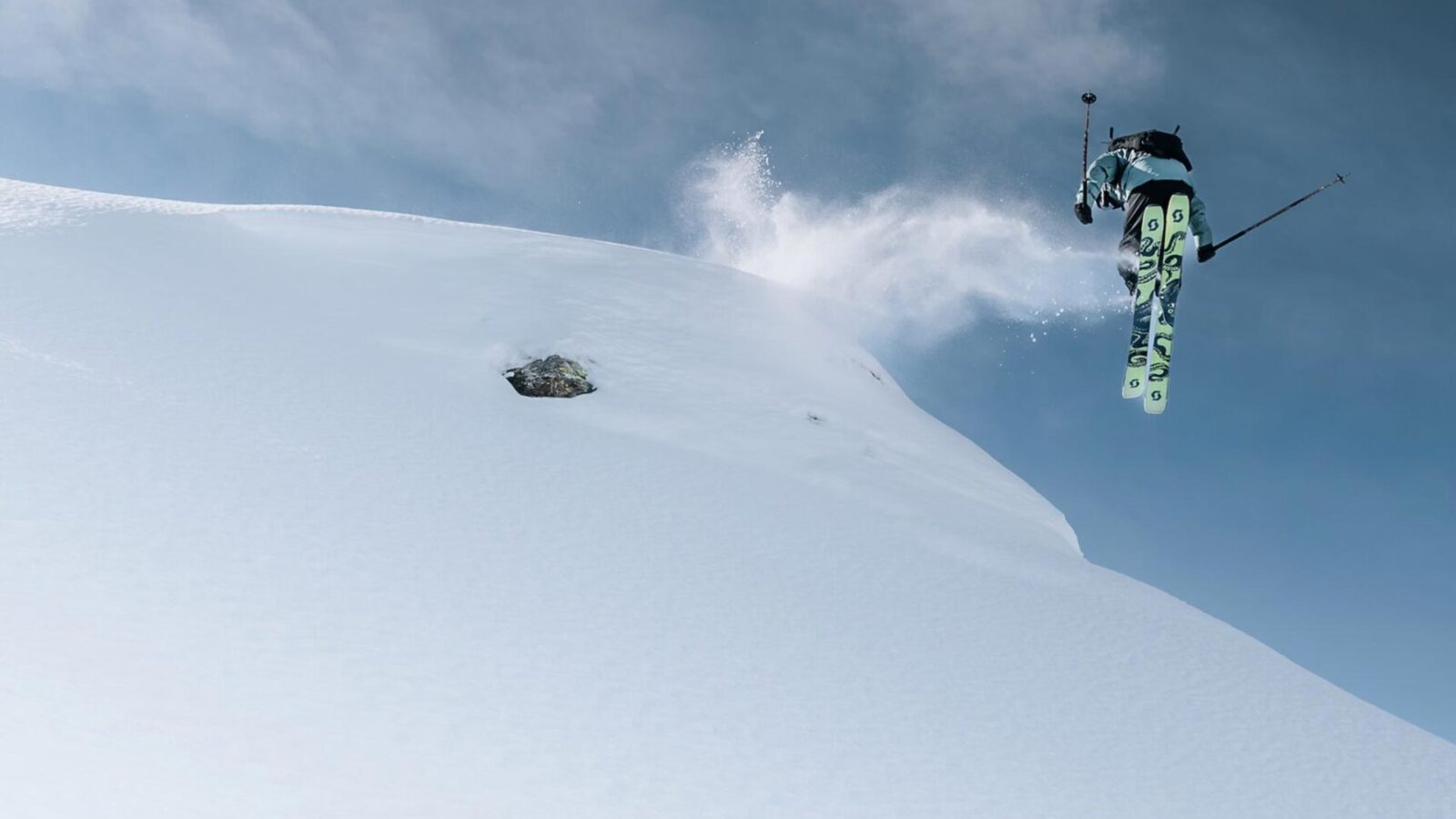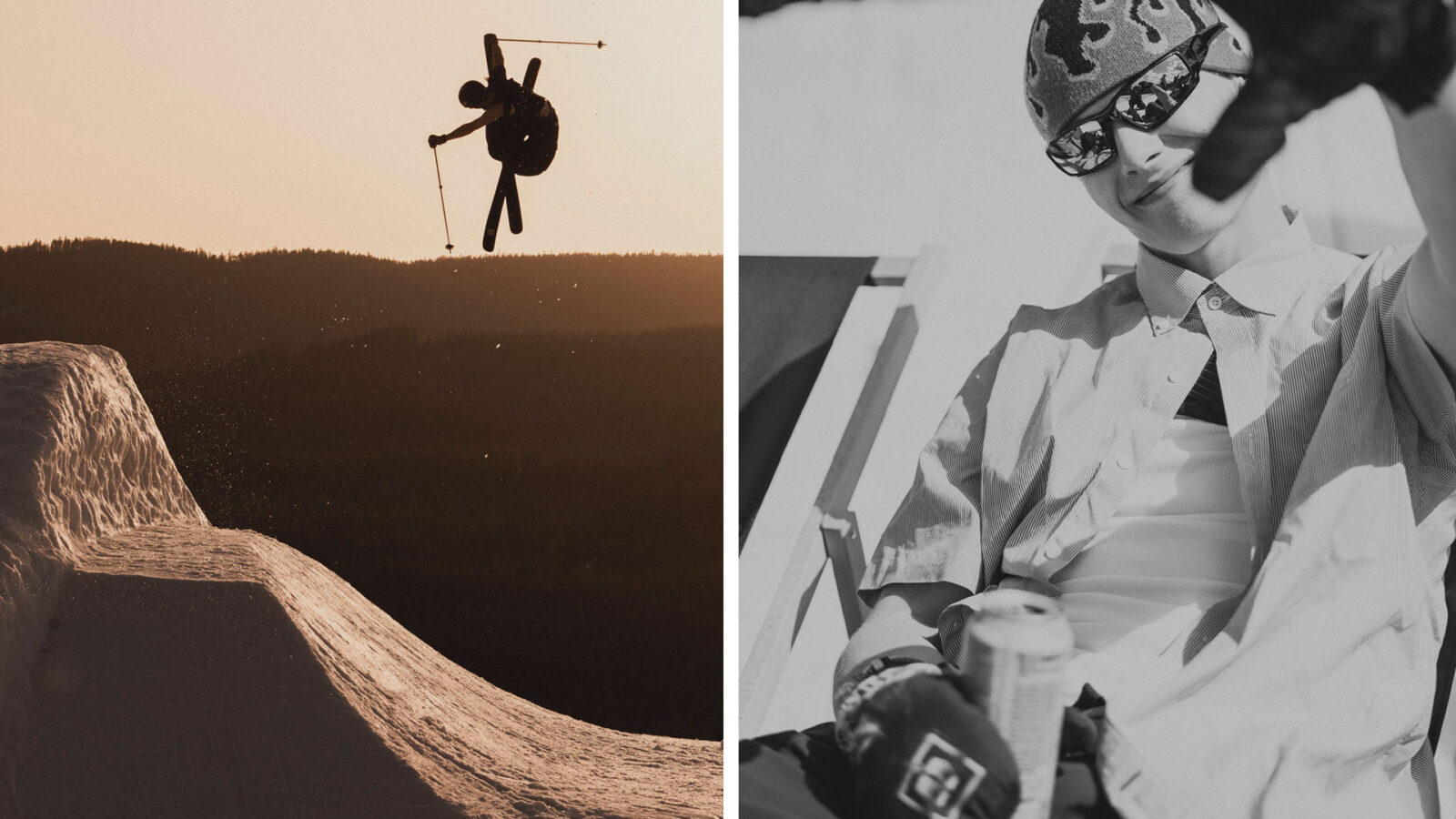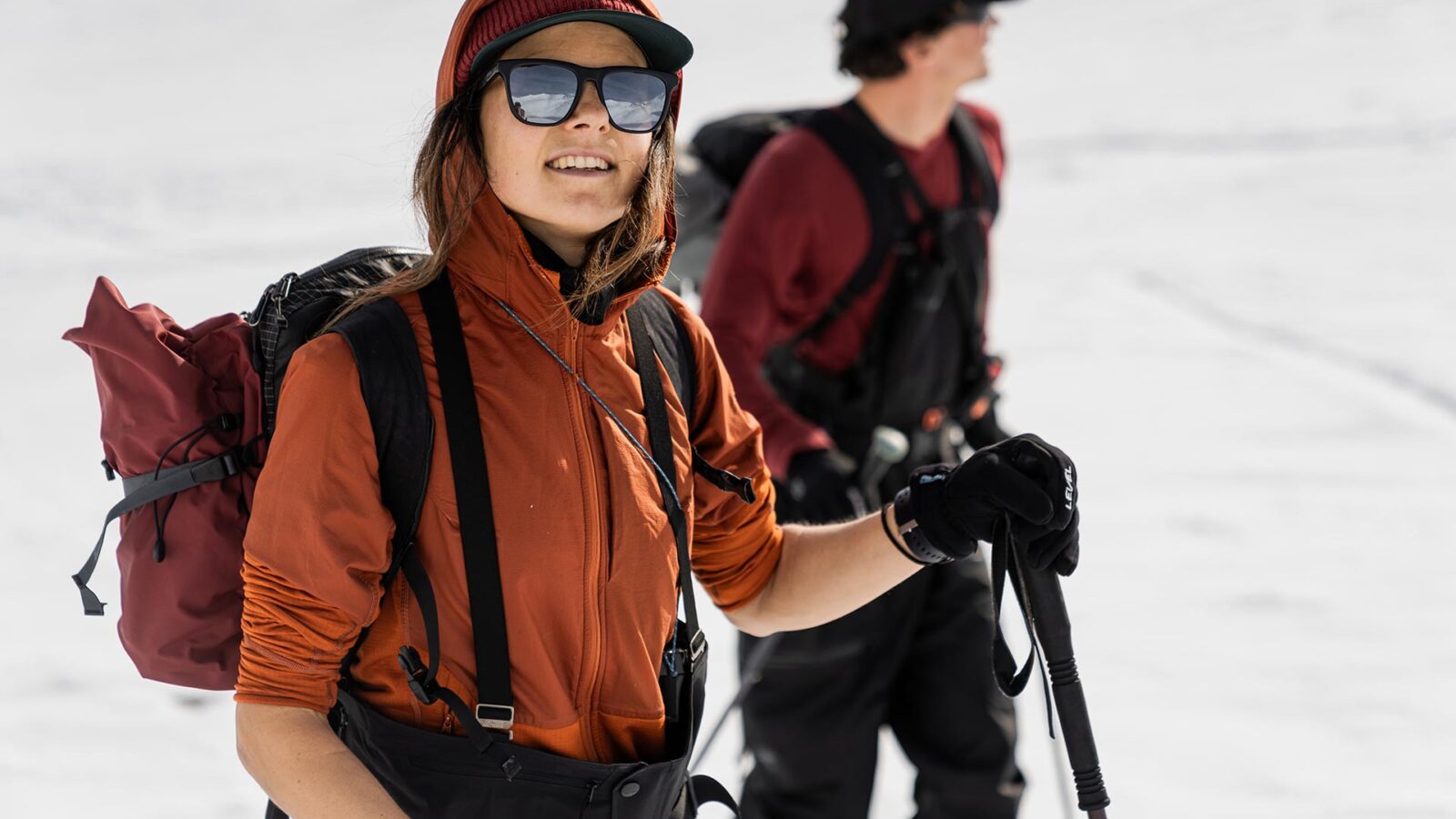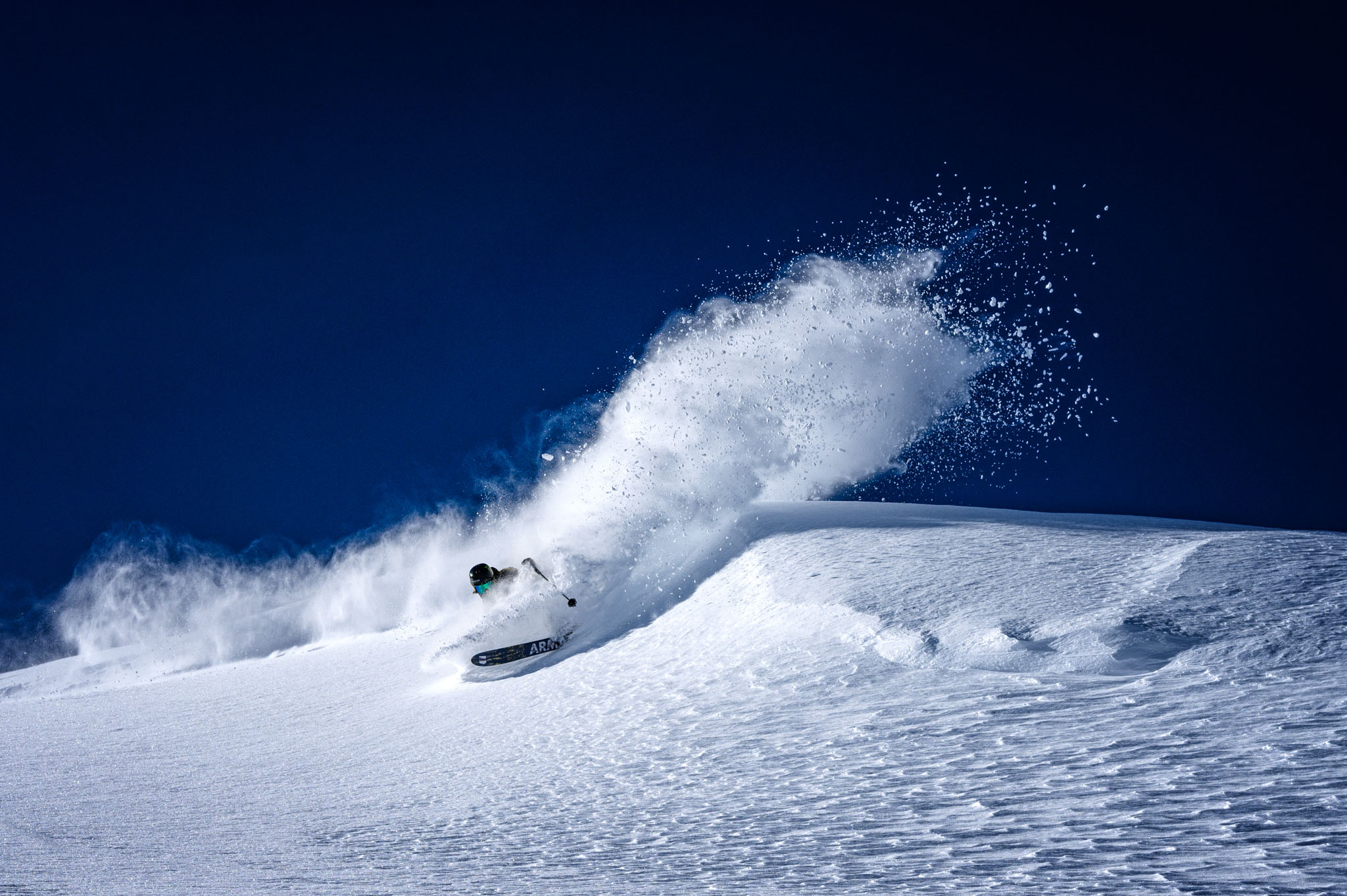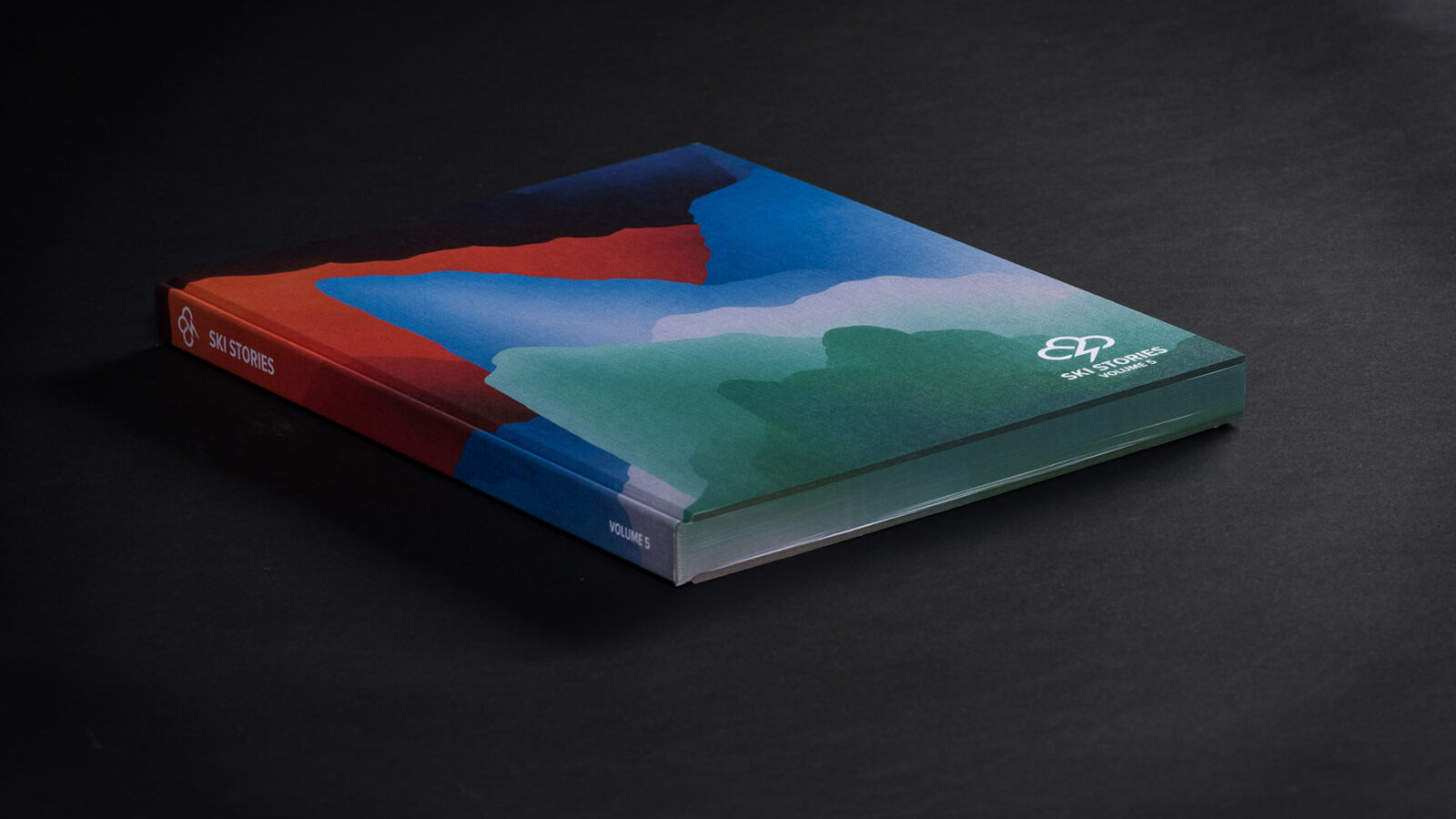In the independent ski film project “Projection,” the Innsbruck-based Latschenkillerkrew and friends explore the architecture and infrastructure of abandoned ski resorts and the landscapes in which they were left behind. On their journey, they discover the unique aesthetics of these places while contemplating a future that will lead to the closure of most if not all ski resorts.
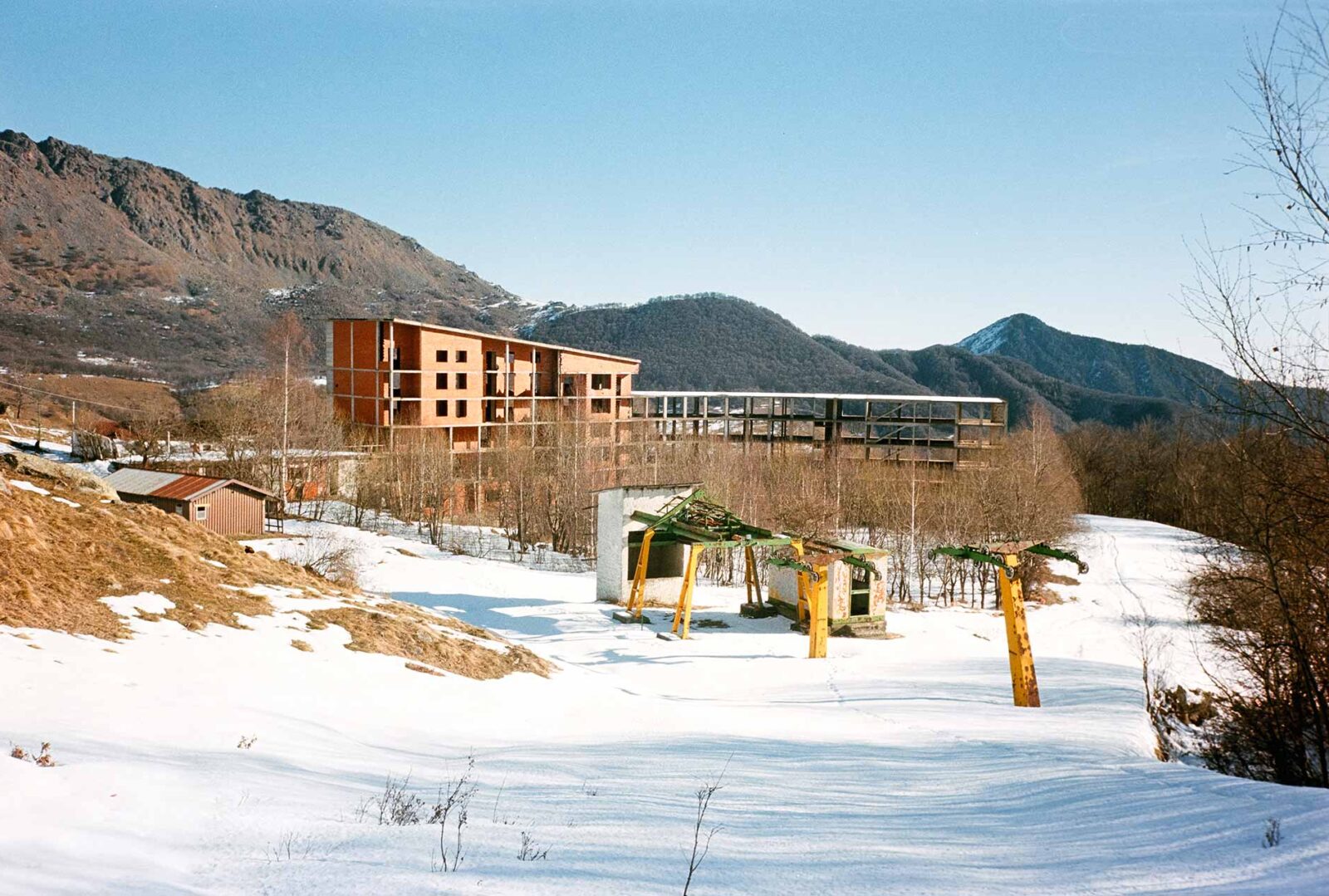
Stories
HighlightWhen winter becomes a memory
At abandoned ski areas, the Latschenkillerkrew sees a glimpse of the future
There are many tales about the time when they still ventured out
When the heights still sometimes got covered in white
Ghostly figures
Chasing something
Something that I’m craving without ever having known it
Haunting the abandoned legacy of winter
We cross a shallow valley and move across the wind-pressed old snow towards a series of old cable car supports that are rusting away on their huge concrete foundations. It’s been a long time since they’ve supported the weight of a gondola. The empty roller batteries are an unusual sight. They almost give the impression of being only temporarily out of service—seemingly waiting for the moment that they will spring back into action to transport skiers up these slopes. Why else would they have been left here?
A few meters ahead, a fallen lift support juts out of the landscape in front of us. Almost reverently, we take a break next to it, inspecting the collapsed foot of the steel colossus in detail. In my mind’s eye, I contrast the dystopian scene before us with the all-too-familiar image of a busy ski area base run. I speculate where exactly the slope ran, trying to imagine in this solitude the commotion that must have dominated this place not so long ago.
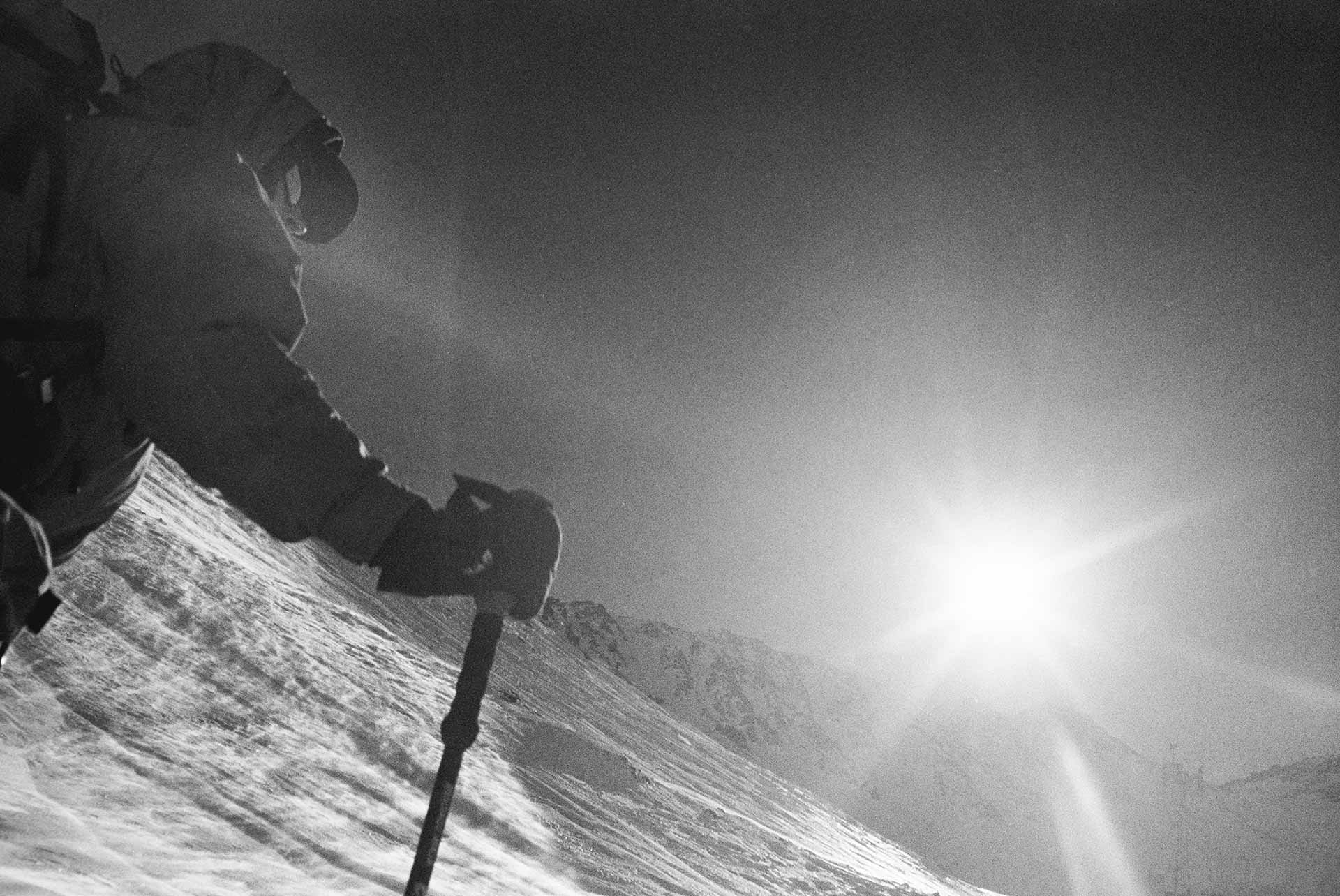
Here, in the ruins of alpine winter sports infrastructure, we sense an interface, a common denominator between the past and the future. These places are stuck between the times. They preserve the past, and at the same time reveal its transience. Over time, such artifacts and places slowly fade, disappear and fall into oblivion. Our central concern in this project was to show the unique aesthetics of these places, to process the impressions and to consciously counteract the process of transience.
My gaze is slowly drawn to the lift shack, originally painted green and yellow, now covered in a red-brown veil of rust. A silent chronicler of years of inactivity, the rust is an unmistakable sign of abandonment. In front of the window with the faded “Biglietteria” (ticket office) sign, time seems to stand still. Pausing, I imagine that each ticket sold here once marked the beginning of a grand winter adventure. Now, this place now only gives the few people who pass by a distant reminder of moments gone by.
Inside, a carpet of yellowed brochures, stickers and swollen bundles of tickets covers the floor like a mosaic. My attention is caught by a rusting ski, its layers almost completely detached from each other. A ski boot is jammed underneath it. A hodgepodge of memories, covered in dust and decay.
Around 222 ski areas and valley lifts in Switzerland—45 percent of the total amount—have already had to close, says Professor Christoph Schuck, who works with his team at the Technical University of Dortmund on abandoned ski areas (also known as LSAPs, lost ski area projects). “I don’t have the impression that Switzerland has a higher density of remaining LSAP infrastructure than other Alpine countries,” says Schuck.
Further research has counted over 600 closed ski areas in the Alpine region as a whole. Abandoned ski resorts are just one of many harbingers of change: Science has confirmed far-reaching and rapid changes in the atmosphere, oceans, cryosphere and biosphere of the Earth. The man-made climate crisis is already having an impact on many weather and climate extremes in all regions of the world. Droughts, heatwaves and extreme weather events are becoming more frequent, especially in the Global South. Just think of the 50°C temperatures in Pakistan and India last summer that resulted in 220 deaths. But even we in the global North are not spared the effects. In July 2021, a total of 189 people lost their lives and 17,000 people lost their property during catastrophic flooding in Germany’s Ahrtal. What has often been referred to in the media as the “flood of the century” is in fact further evidence of a human-altered climate.
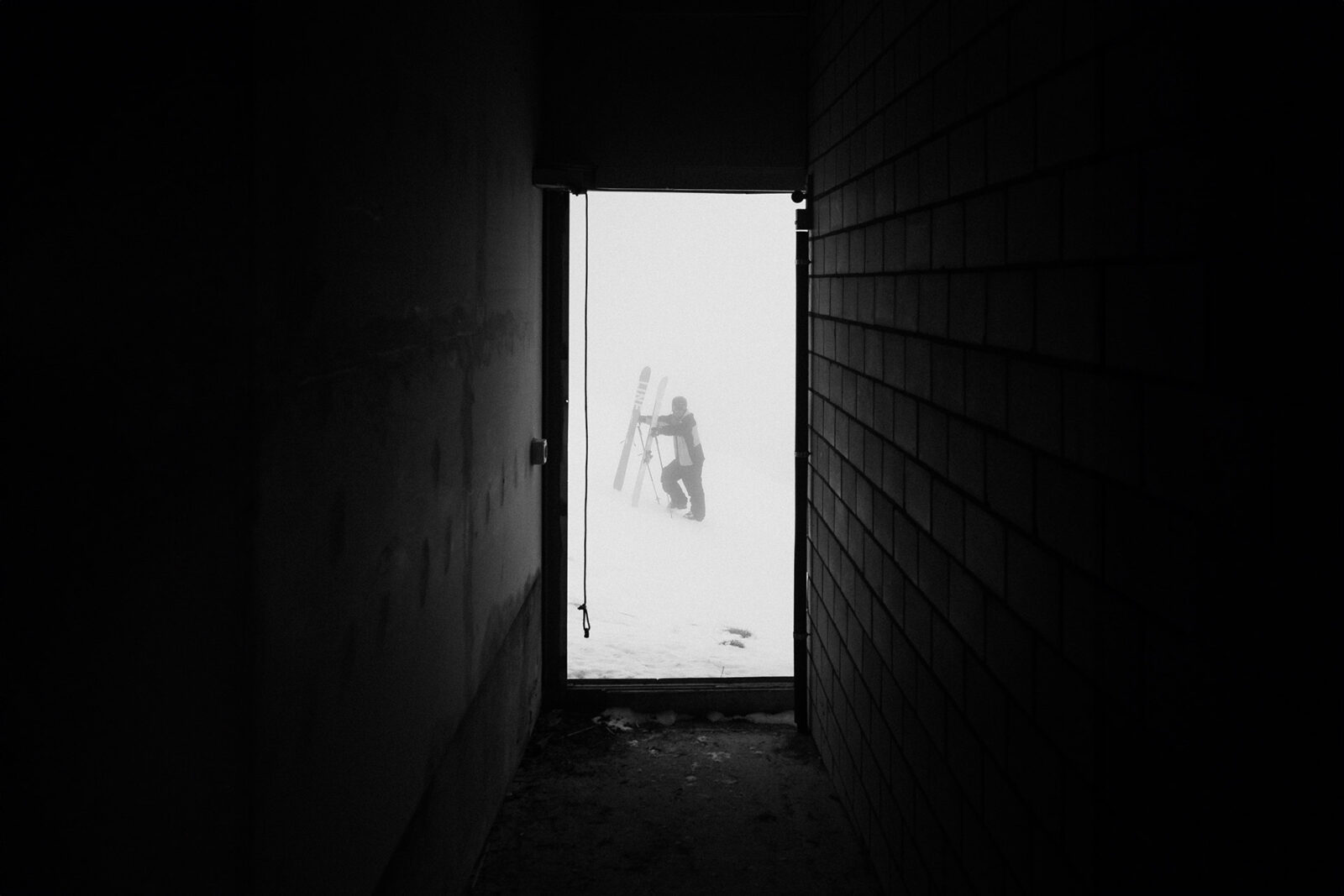
The International Cryosphere Climate Initiative draws a sobering conclusion about the cryosphere in its latest publication “State of the Cryosphere 2023 – Two Degrees Is Too High.” The cryosphere comprises all parts of the Earth that consist of frozen water. This includes all forms of ice, including glaciers, snow, icebergs, ice caps, permafrost and sea ice. Today’s warming of 1.1°C compared to pre-industrial times is already leading to a massive decline in Arctic and Antarctic sea ice and a loss of glacial ice in all regions of the world. According to the latest report from Cryosphere Monitoring Austria, the winter of 2021/22 was a year of extremes. On average, the glaciers in Austria recorded a loss of 3.2 meters of ice depth. That is almost three times as much as the average of the last 10 years. The year 2022 was also the second warmest year in Austria since measurements began in 1767.
Read the "State of the Cryosphere" 2023 report:
iccinet.org/statecryo23/If CO2 emissions continue to rise at the current rate, global temperatures will increase by at least 3°C by the end of this century. Even a warming of 2°C will lead to widespread, long-term and irreversible ice loss, accompanied by a significant decrease in snow cover. Various studies point to the alarming fact that snowfall limits in the Alpine regions are receding at an increasingly rapid rate. Temperatures above freezing are rising to ever higher altitudes. At lower altitudes and latitudes, snow will fall less frequently or not at all, and the winter season will shorten. Winter sports enthusiasts have been experiencing a sharp decline in snowfall and postponed or shorter winters for decades. Projections confirm a huge glacier loss by 2100, including a complete or near-complete loss of mid- and low-latitude glaciers by 2100 under a high-emissions scenario (above 3°C).
As I walk over the snow-blown ridge at 2797 meters elevation, I look down into the northwestern face. In mid-February 2022, it is covered with around 20-30 centimeters of snow, which marks a record low at this altitude. The Institute for Snow and Avalanche Research confirms that never before, since records began, has so little snow been measured here at this time of year. This makes me wonder how sustainable winter sports and our lifestyles in general are. We are also aware that winter sports are not sustainable per se, and never will be.
Rapid and targeted changes in all sectors (transportation, energy, industry) and systems are necessary to ensure a future worth living. A positive outlook for our future is only possible if our political and economic systems design and implement sensible, well thought-out and sustainable solutions. Constructive solutions for a more sustainable approach to nature and the current situation can also be implemented in winter sports. Adapting the start of the winter season to changing climatic conditions would be a first concession not to oppose the changes in nature, but to adapt to them. Eliminating artificial snowmaking could save a lot of water and energy. Sustainability reports and conversion to renewable energies are further options for cable car operators. In addition, outmoded discussions about new lift facilities—even in glacial areas—can be dispensed with in 2024. As an example, “the new expansion plans in Pitztal are cynical,” complains the German Alpine Association in a statement.
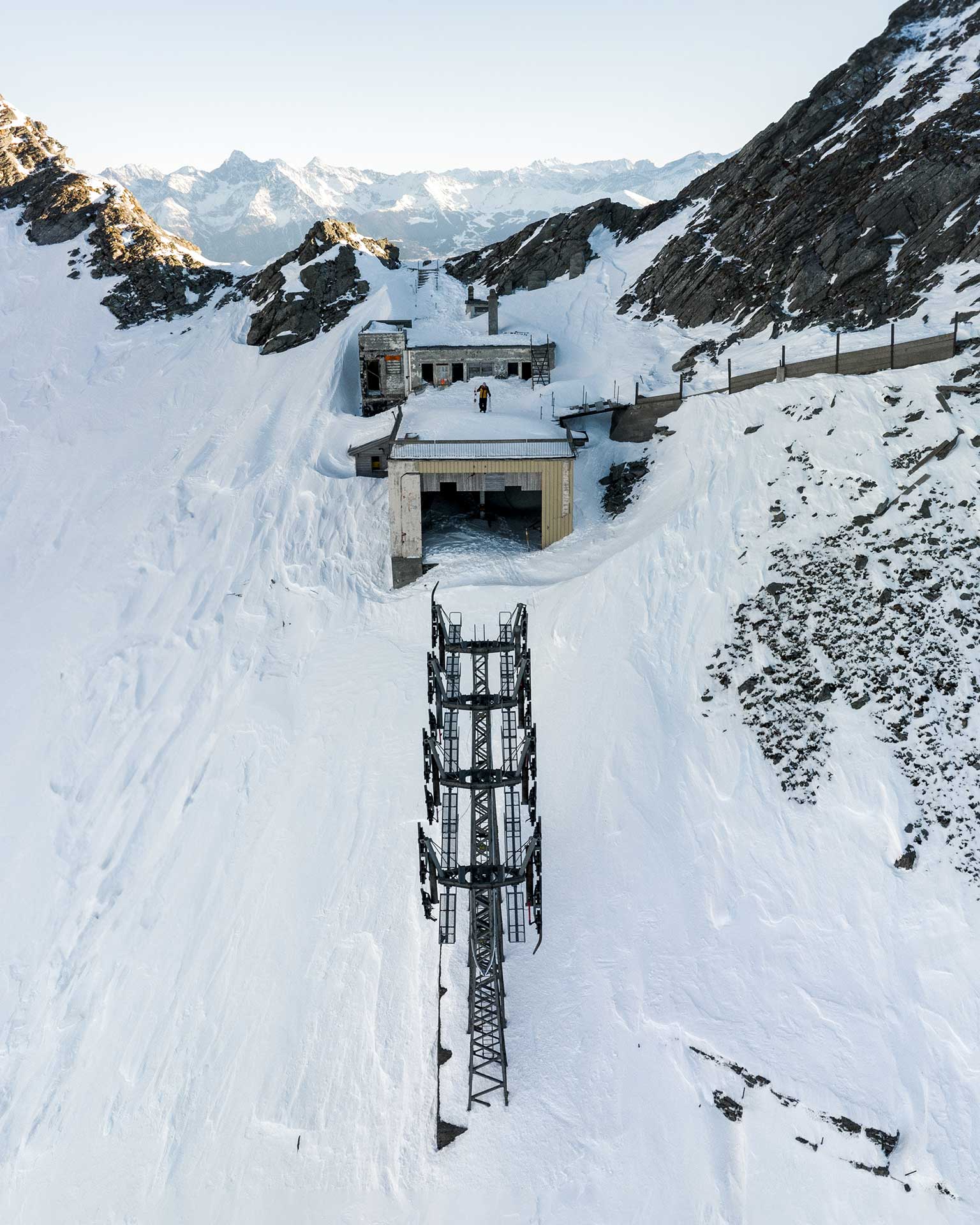
The climate protection organization Protect Our Winters is addressing the International Ski Federation with a petition named “Try harder FIS” that calls for the implementation of a targeted sustainability strategy, including a roadmap to reduce emissions by 50% by 2030. It is also calling for a transparent sustainability report from the FIS and an adjustment to the competition calendar. When races take place in October, “we are almost forced to go to the southern hemisphere for training beforehand, where we haven’t been for years,” notes Christian Scherer, general secretary of the Austrian Ski Federation (ÖSV).
Learn more about the "Try harder FIS" campaign:
change.orgNational ski federations like the ÖSV should use their political influence to lobby for climate protection measures at a national level. Alternative tourism concepts such as slow travel or sustainable tourism are attracting more and more attention. Slow travel is a travel philosophy that aims to travel consciously and sustainably, focusing on local experiences and the discovery of cultures instead of concentrating on fast travel and superficial sightseeing tours. Sustainable tourism describes the opposite of mass tourism. It strives to minimize environmental impact, promote social responsibility and strengthen local economies in order to create a long-term balance between tourism development and environmental protection. Individual travel to winter sports regions is responsible for over 50% of emissions in winter tourism, so individuals should use public transport. Winter tourism in Austria is responsible for around five percent of our total emissions.
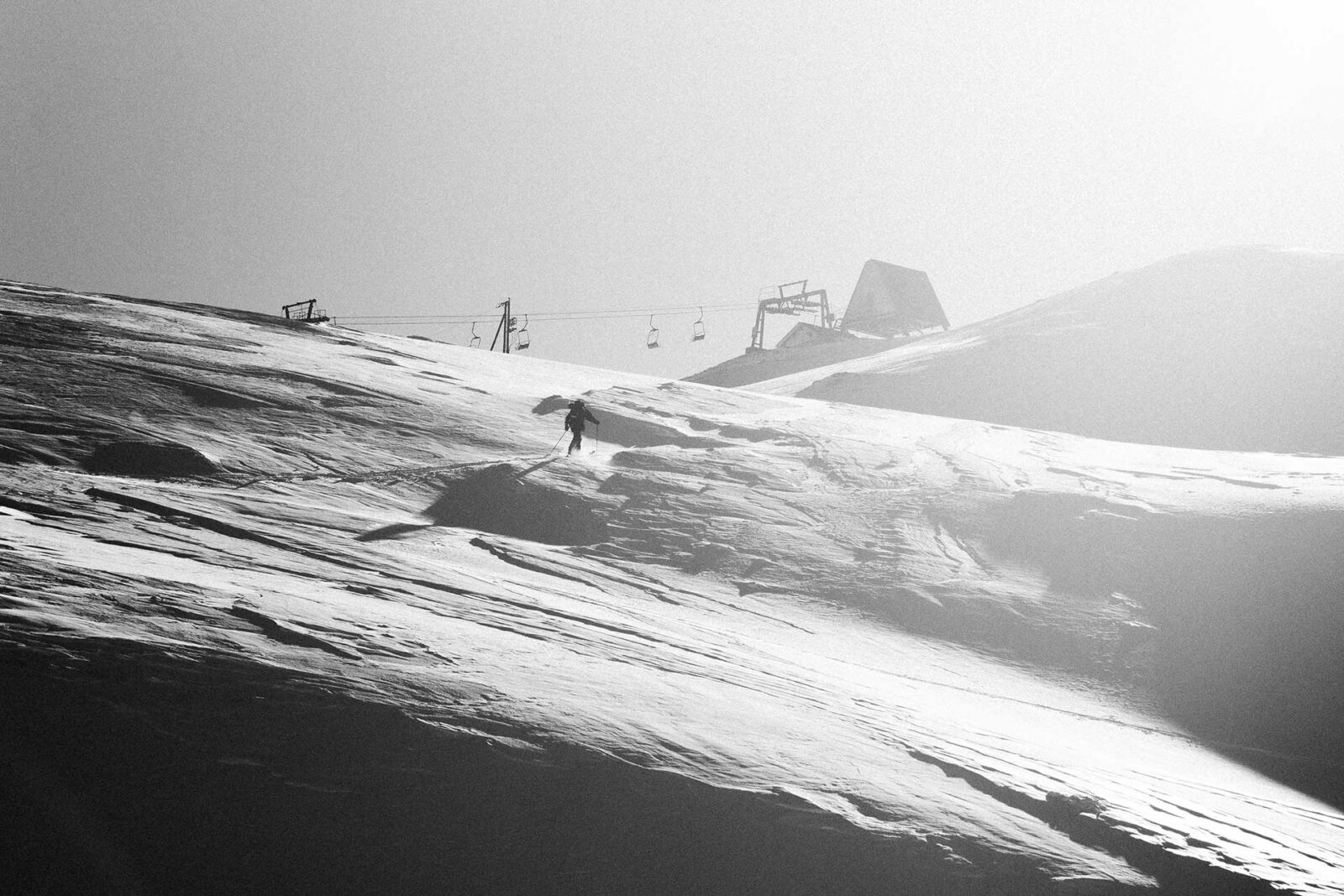
“Projection” begins with a poem by Vincent Devens that reflects on the adventurous reports of the last skiers. The narrator speaks from the perspective of a generation from a distant future that no longer experiences the joy of snow. These few lines at the beginning of the film outline a dystopian future that will become the real world for all of us if we stay the course. The sad but realistic projection that people will only experience from stories what it was like to slide down these mighty, snow-covered mountains emphasizes the seriousness of the global crisis. The film itself is embedded between the narrative of the intro and a concluding statement that illustrates the increasing inevitability of this perspective.
At first, we wondered if this tone was too pessimistic. However, we concluded that in fact, it is realistic. We can and must expect viewers to accept this uncompromising tone.
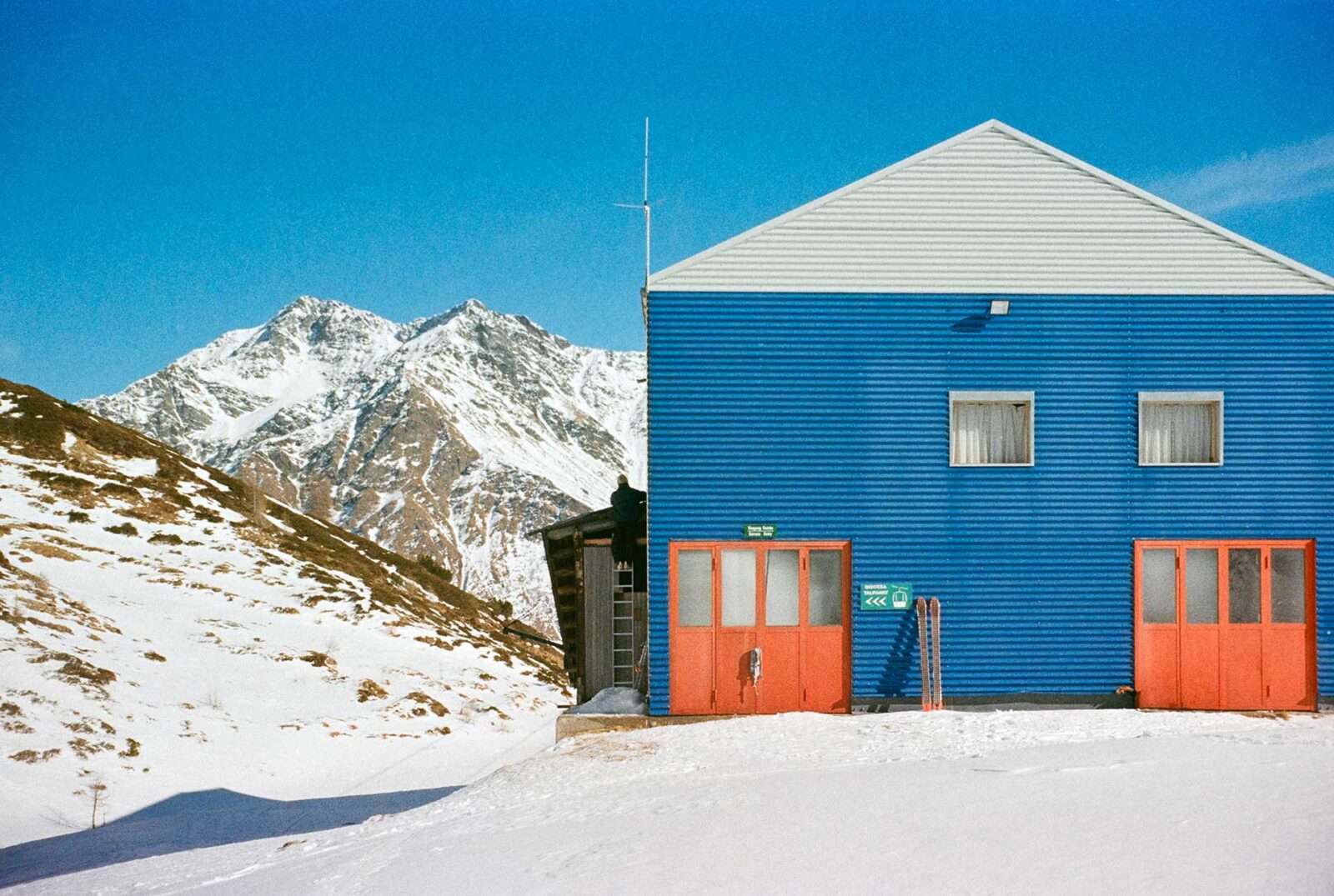
These forgotten and abandoned ski resorts are more than just empty buildings and rusty ski lifts. For us, it was a magical experience to explore these places. Ultimately, we realized that our world is constantly changing, but also that we have the power to use our lifestyles and voices together to shape and influence this necessary change.
These places are simultaneously a reminder of the past and a projection of what lies ahead. A journey into the past becomes a journey into the future, a reflection on what was and what will be.
